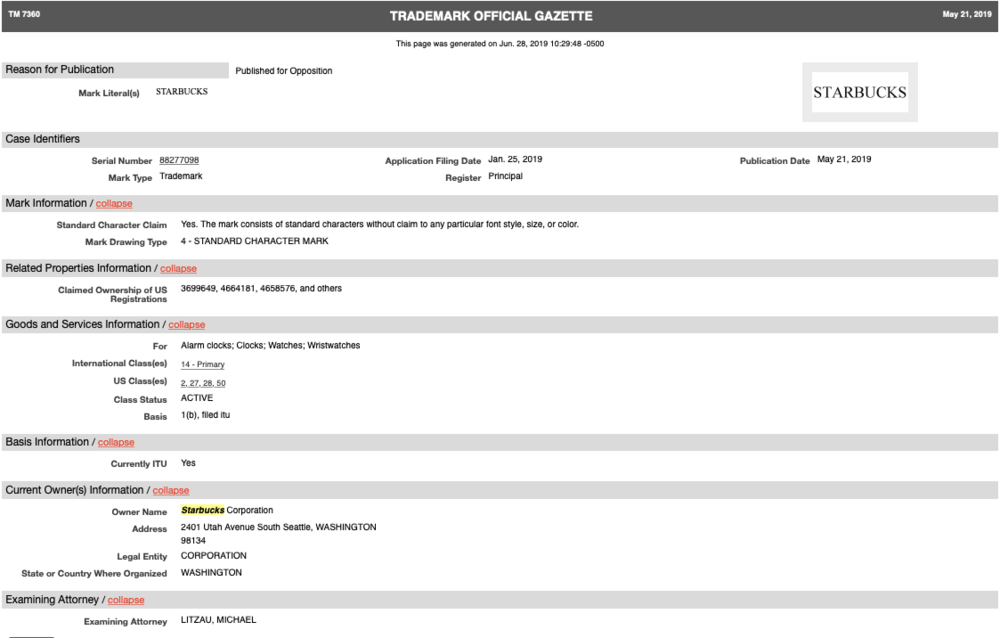Originally published by Seyfarth Shaw LLP.
By David J. Rowland, Jennifer A. Riley, Uma Chandrasekaran, and Michael D. Jacobsen
 Seyfarth Synopsis: Google’s recent travails with simultaneous traditional and “reverse” discrimination claims signal a new era of dynamic employment discrimination risk. Employers will be wise to consider the push and pull legal effect of diversity and inclusion programs, pay equity reviews, and other well-intended efforts.
Seyfarth Synopsis: Google’s recent travails with simultaneous traditional and “reverse” discrimination claims signal a new era of dynamic employment discrimination risk. Employers will be wise to consider the push and pull legal effect of diversity and inclusion programs, pay equity reviews, and other well-intended efforts.
Although employment discrimination claims are a familiar risk to most employers, a growing wave of lawsuits alleging “reverse discrimination” is adding a layer of complexity in this area. The potential exposure arising from these lawsuits makes them just as much “bet-the-company” endeavors as many traditional discrimination claims. Moreover, they represent a way that well-intentioned efforts by employers to combat more traditional notions of discrimination can backfire. Meanwhile, traditional claims of discrimination are not going away. As a result, many of the most prudent and egalitarian employers may feel trapped in “no-win” situations.
To illustrate, we examine the issues that household-name and tech industry giant Google has faced in recent years. As Google’s story shows, it is crucial that businesses monitor and understand how to manage this swiftly emerging “dynamic discrimination risk,” which has already seen many companies get blindsided with innovative and eyebrow-raising lawsuits.
Understanding The Issue
“Reverse discrimination” refers to discrimination in the terms, conditions, and privileges of employment against members of “historically advantaged” groups on the basis of race, color, national origin, sex, religion, or other status protected under Title VII of the Civil Rights Act of 1964. Thus, while the commonly-used term “reverse discrimination” may suggest something else, the Equal Employment Opportunity Commission, takes the position, endorsed by most courts, that reverse discrimination is discrimination, plain and simple, and prosecutes claims for reverse discrimination under the same standards it uses to pursue discrimination claims brought on behalf of members of minority or historically disadvantaged groups. This is not a new phenomenon in the U.S. workplace. Private litigation alleging reverse discrimination claims has been expanding, however, over the past decade, garnering substantial damages awards against employers.
Google’s Gauntlet
On One Side…
In January 2017, the Office of Federal Contract Compliance Programs (“OFCCP”) filed a lawsuit against Google to compel the company to produce historical employee-compensation data as part of an affirmative action compliance audit. In justifying its need for the information, OFCCP disclosed that it had identified evidence of systematic pay disparities against Google’s female employees when examining salary information from 2015 and needed to dig further back in time to assess the claims. During the proceedings, OFCCP officials claimed that the apparent “discrimination against women in Google is quite extreme, even in this industry,” and stretched “pretty much across the entire workforce.” Google responded by pointing to its annual pay analysis, which it claimed revealed no gender pay gap.
But the knives were out. As Seyfarth’s Pay Equity Group previously reported, later that year, Google was hit with a class action lawsuit claiming discrimination under the California Equal Pay Act. Citing to the OFCCP’s analysis, the complaint alleged that Google discriminated against its female employees by systematically paying them less than their male peers for performing substantially similar work under similar working conditions. The plaintiffs further alleged that Google assigned and kept women in job ladders and levels with lower compensation ceilings and advancement opportunities than those to which men with similar skills, experience, and duties were assigned, and that Google promoted fewer women – and promoted them more slowly – than similarly-qualified men. Currently, the case is approaching class certification briefing, with a putative class of approximately 8,300 women who have worked for Google in California since 2013.
Not long after, in early 2018, Google was hit with another gender discrimination suit in California Superior Court. This time, the plaintiff alleged that Google delayed in hiring her so that it could hire a white male for the position instead. Google was able to dispose of the lawsuit quickly, with the court granting a joint stipulation to dismiss the case just a couple of months after it was filed so that the parties could proceed to arbitration. However, the Company did not have any time to catch its breath, as it already was facing a new obstacle.
…And On The Other
In January 2018, while Google was dealing with these conventional legal woes, a pair of reverse discrimination lawsuits struck.
As Seyfarth reported in the first case, two former employees alleged that Google engaged in discrimination, except this time, the claim was that white, conservative males were impacted. Specifically, the plaintiffs alleged that employees who deviated from the “majority view” at Google regarding issues such as “‘diversity’ hiring policies, ‘bias sensitivity,’ or ‘social justice,’” were singled out, mistreated, and systematically punished and terminated from the Company. The plaintiffs further alleged that “open hostility” to conservative viewpoints resulted in race and gender-based discrimination in hiring, promotion, and termination decisions because of the “extreme” lengths to which Google went in considering race and/or gender as determinative hiring factors, all to the detriment of white males. The case was brought on behalf of proposed classes of all employees of Google who had been discriminated against due to their “male gender” and/or “Caucasian race,” as well as their “perceived conservative political views” in California at any time going as far back as 2014.
Perhaps most striking about the lawsuit was that the plaintiffs highlighted several of Google’s efforts to promote diversity within its workforce as evidence of alleged bias. For instance, the complaint recounted a “Diversity and Inclusion Summit” during which Google allegedly presented on some of its diversity policies and practices that included affording female and minority job applicants “extra interviews” and a “more welcoming environment based on their race or gender” followed by placing these job candidates into “high priority queues” to increase the likelihood and speed with which they would be hired. Additionally, the plaintiffs supported their allegations by pointing to an online and in-person “diversity training class” that addressed biases against women and “white male privilege” in the workplace.
In the second reverse discrimination action, filed just a few weeks after the first, the plaintiff had worked as a recruiter for Google’s YouTube “tech staffing” management team. The plaintiff alleged that for several years Google had “implemented clear and irrefutable policies . . . of systematically discriminating in favor of job applicants who are Hispanic, African American, or female, and against Caucasian and Asian men.” Notably, the plaintiff also claimed that these policies were designed “to manage public relations problems arising from the underrepresentation of women and certain minority groups in the Google workforce.” The plaintiff further alleged that Google’s policy documents declared that “only individuals who were ‘diverse’” would be hired for certain positions, and that Google not only “carefully track[ed] the race and gender of each applicant” and based its hiring decisions on those criteria but even went so far as to instruct its employees “to purge entirely any applications by non-diverse employees from the hiring pipeline.”
Currently, both of these lawsuits are stayed in whole or in part pending arbitration. However, on June 7, 2019, the court denied Google’s demurrer seeking to dismiss supplemental claims (that were not stayed) alleging that Google systematically discriminates against conservatives in its hiring practices. These back-to-back reverse discrimination actions – hitting at a time when Google was reporting that almost 70% of its workforce was male and 91% was Caucasian or Asian and already had two lawsuits and a OFCCP investigation alleging discrimination against women on its hands – are attention-grabbing to say the least.
Odd Numbers/New Problem
Google’s 2018 annual pay review also demonstrates the issues that can arise when evaluating complex pay practices. In January 2019, Google disclosed to its employees the findings of its pay study for 2018. In part, the analysis showed that Google had underpaid men for doing similar work as women in certain positions. The Company noted in its explanation that managers apparently had used discretionary funds to increase employee incomes more often for certain women employees, resulting in a pay differential for men in the same lower-level software engineering job category. To address these and other identified pay differences, Google publically announced that it had implemented a $9.7 million payout across 10,677 employees.
So far, there does not appear to have been any legal blowback against Google related to this revelation. However, $9.7 million is an expensive fix and, coming off of the recent reverse discrimination lawsuits, the timing is uncanny. Meanwhile, Google remains committed to evaluating its pay impacting practices , as Google also announced that it was undertaking a comprehensive review of its leveling, performance rating and promotion processes. To the extent Google continues its practice of publishing the results of its reviews, any announcements will undoubtedly will generate headlines, and may spur complaints, including reverse discrimination class actions, depending upon which group(s) appears disfavored.
Implications For Employers
In sum, these very real workplace challenges do not appear to be going away anytime soon. This account of a high-profile company fighting discrimination claims on both fronts and, most recently, its unexpected discovery of a potential pay disparity impacting its male workforce, plus the costly course-correction that followed, serves as a warning shot to employers of any size that now is the time to evaluate hiring and compensation policies and procedures. As the example of Google shows, an era of rising reverse discrimination claims poses a growing risk and area of uncertainty for employers, underscoring the balancing act that employers face in implementing initiatives to promote fairness and opportunity among their existing employees and potential applicants.
Seyfarth Shaw attorneys in the Firm’s Complex Discrimination Litigation, Organizational Strategy & Analytics, and Workplace Counseling Solutions practice groups are at the forefront of successfully helping employers navigate, block, and tackle these complex, emerging risks. As the preeminent source of thought leadership in this space, over the next several months, our esteemed attorneys will publish blog posts on a number of critical related topics, including:
- The balancing act of resourcing talent domestically and internationally;
- Avoiding preferential recruiting and hiring traps;
- Recognizing and investigating harassment and discrimination in the 21st Century workforce;
- The dollars and sense of creating competitive and equitable compensation and promotions programs; and
- Navigating identity issues in corporate social media.
The era of dynamic discrimination risk is upon us. Stay tuned to our blog for the latest updates.
Curated by Texas Bar Today. Follow us on Twitter @texasbartoday.
from Texas Bar Today http://bit.ly/31W75ae
via
Abogado Aly Website
 10. New Wave of Pension Plan Litigation – Sharon Fountain, Russell Gully, Jason Loden, Jessica Morrison, and Neely Munnerlyn of Thompson & Knight LLP @ThompsonKnight in Dallas
10. New Wave of Pension Plan Litigation – Sharon Fountain, Russell Gully, Jason Loden, Jessica Morrison, and Neely Munnerlyn of Thompson & Knight LLP @ThompsonKnight in Dallas



 My
My 
 was recently sworn-in as 2019-2020 TYLA president at the State Bar of Texas Annual Meeting on June 14 in Austin. The Susan Rocha Award recognizes and honors a current or former assistant city attorney for significant and distinguished career achievements in the field of municipal law. Because of Rocha’s work with smaller cities, the TCAA grants one award each year to an assistant city attorney from any city other than Texas’ eight largest (Arlington, Austin, Corpus Christi, Dallas, El Paso, Fort Worth, Houston, and San Antonio).
was recently sworn-in as 2019-2020 TYLA president at the State Bar of Texas Annual Meeting on June 14 in Austin. The Susan Rocha Award recognizes and honors a current or former assistant city attorney for significant and distinguished career achievements in the field of municipal law. Because of Rocha’s work with smaller cities, the TCAA grants one award each year to an assistant city attorney from any city other than Texas’ eight largest (Arlington, Austin, Corpus Christi, Dallas, El Paso, Fort Worth, Houston, and San Antonio).

 Seyfarth Synopsis: Google’s recent travails with simultaneous traditional and “reverse” discrimination claims signal a new era of dynamic employment discrimination risk. Employers will be wise to consider the push and pull legal effect of diversity and inclusion programs, pay equity reviews, and other well-intended efforts.
Seyfarth Synopsis: Google’s recent travails with simultaneous traditional and “reverse” discrimination claims signal a new era of dynamic employment discrimination risk. Employers will be wise to consider the push and pull legal effect of diversity and inclusion programs, pay equity reviews, and other well-intended efforts.